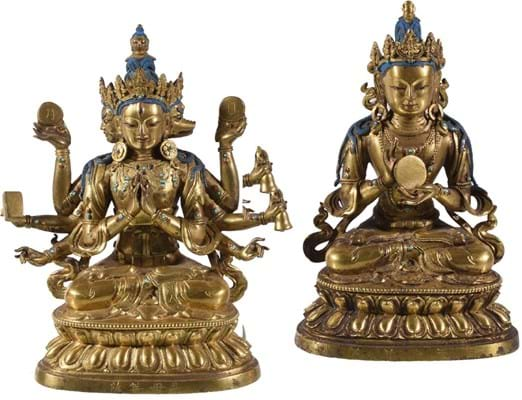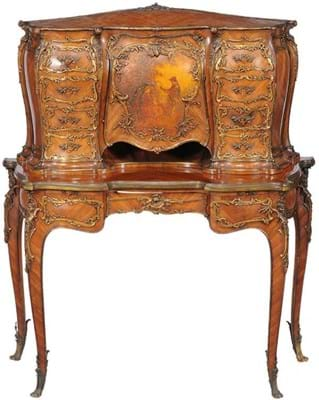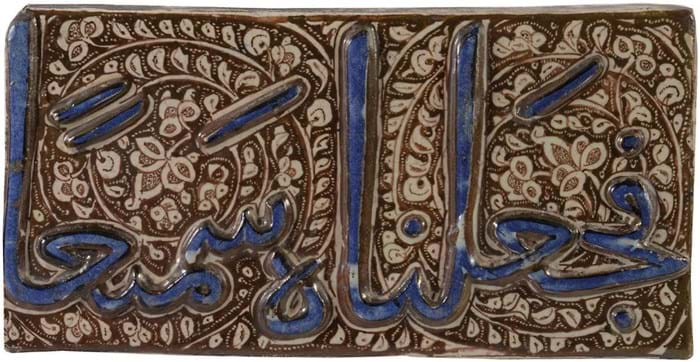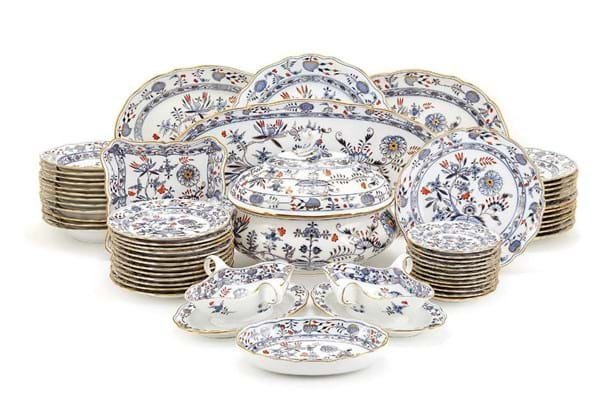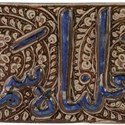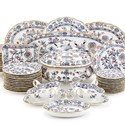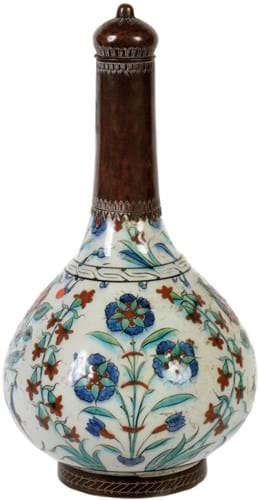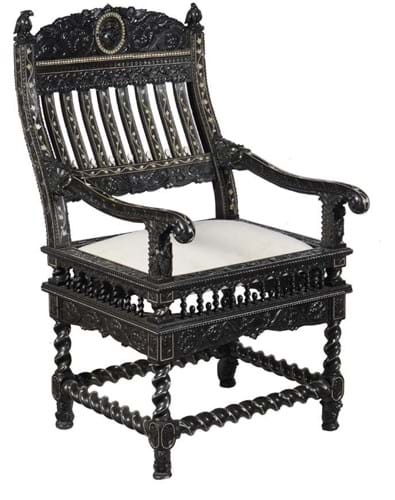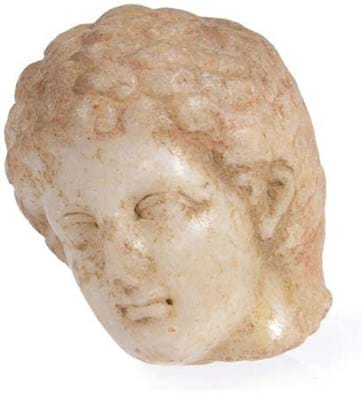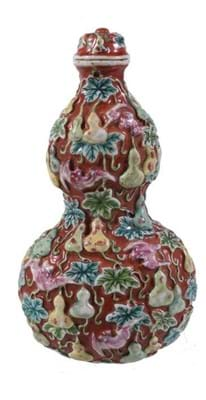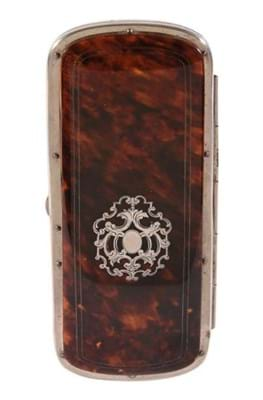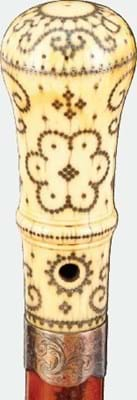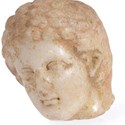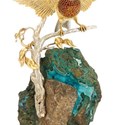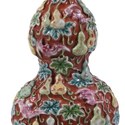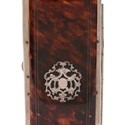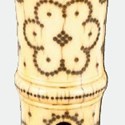Fresh to market, having been stored for 20 years and more, the extraordinary range of items – from academic antiquities to top-name 20th century luxury items via the occasional two-figure collectable – were offered by Dreweatts (24% buyer’s premium) at Donnington Priory on January 23-25.
“We are beyond thrilled with the results,” said Nicholson after international bidding brought a hammer total just shy of £950,000 – 50% more than the top estimate – for the 745-lot sale, 95% of which sold.
The vendor had begun his 30-year acquisition campaign in the ’70s, giving rise to a belief he was from the Middle East. Although Nicholson credited him with a discerning eye, it seems he did not use it much to dwell on his purchases, many of which still had their original auction wrapping on when they came to be sold.
They had the look of pieces bought as investments. If so, many paid off well, while others suffered with the fluctuations of the markets.
Oriental pieces have, of course, soared in the past two decades, Indian material as well as Chinese.
Offered on the second day, these items brought the highest prices including the top-selling Rajasthani 18th century miniature of the sky at night which sold at a 10-times estimate £80,000 (Pick of the Week, ATG No 2327).
Sino-Tibetan figures
The two Sino-Tibetan gilt-bronze figures illustrated above were the other Oriental stars. Dated 18th century or later, the 7in (18cm) tall seated figures inlaid with turquoise and cornelian were bought for £2800 hammer at Sotheby’s in 1991.
This was reflected in the £2000- 3000 estimate at Donnington Priory, but the swing in the market since then took them to £60,000, bid by a Chinese dealer.
Other Chinese works doing well on the second day of the sale included a Qing snuff porcelain bottle, with the auspicious double-gourd form and equally auspicious enamelled symbols of five bats to either side flying among vines and fruit.
The 4½in (11cm) tall bottle, enamelled in coral, pink, green, yellow and black, quadrupled the top estimate, selling to another UK collector at £8000.
Persia and Turkey provided two of the day’s unexpected five-figure sellers. From Kashan, the Isfahan city famed for its pottery and tiles in the 12th-14th centuries, came a copper lustre tile catalogued as c.13th century or later.
The 15¾in wide x 8in high x 1in deep (40 x 20 x 2.5cm) tile featured raised script translating as And He made him hear. Estimated at £1000-1500, the tile went to a European dealer at £11,000.
A c.1600 Ottoman Iznik bottle vase created more of a surprise.
Standing 12½in (32cm) tall, with brightly glazed and enamelled floral decoration and later metal mounts, it was pitched at £500-800. However, it triggered an international bidding battle before going to a UK dealer – probably bidding for a client as with many of the trade buyers – at £18,500.
At the other end of the price range, a taste of Tibet in the form of a 20th century, 11in (28cm) high silver metal and copper ewer could be had with a bid of £50.
Coromandel classic
Furniture was not a major feature of the sale but pieces on offer were of types less affected by the collapse of prices in the past 20 years. A late 17th century Coromandel Coast piece, for example, appealed to a very different market.
The catalogue noted that the elaborately carved ebony and ivory inlaid armchair incorporated elements of ebonised hardwood (i.e. it was not all solid ebony) and that some of the inlay was bone rather than ivory.
The chair sold to a Continental dealer at £13,000 against a £5000-8000 estimate.
Best of the furniture among the mostly Western material offered on Day 1 was a late 19th century ormolu-mounted writing table in the Louis XV style.
Possibly by Françoise Linke, the leading Paris ébéniste of the period, with vernis Martin-style decoration the 4ft 4in (1.33m) tall desk was estimated at £3000-4000 and sold to the UK trade at £18,000.
A late 19th century tortoiseshell spectacles case which would have looked well with the desk was one of the more whimsical pieces in the consignment.
Picked up at Bonhams in 2002, the monogrammed 6in (15.5cm) case took £50 from a Middle Eastern bidder at Donnington Priory.
At the other end of the buyers’ budgets, Day 1 also more than justified the title of the series An Eye for Luxury with some top-name craftsmanship, sometimes rather unfairly dismissed as high-priced bling but patently still very marketable.
Among a number of late 20th century pieces by London jeweller Asprey, both doubling the estimates, were a 12½in (31cm) high gold and silver mounted rock crystal whisky barrel at £15,000 and a London 1978 white and yellow gold gem-set table centrepiece of a songbird at £12,000.
Both prices were topped by a set of five London 1966 22ct gold beakers by How of Edinburgh. Weighing 43oz in all, the set sold at £29,500, which was just shy of the estimate but comfortably up on the £7000 hammer the set took at Christie’s in London in November 2000.
Take a walk
The vendor had his buying quirks as well as a shrewd investment policy.
The sale included no fewer than 31 lots of walking sticks, a number of them multiples, made from the UK to China and dating across three centuries.
They ranged from a 1986 Asprey example with silver-gilt horse head handle at a six-times estimate £2600 to a William and Mary malacca cane with piqué-worked ivory knob at a double-estimate £1600.
Switching from dandies’ accessories to the more academic purchases of the consignor, the earliest item sold over the three days was a 4¾in (12cm) long marble fragment dated c.2700-2400BC, the thighs of a Cycladic female figure, which went above hopes at £750.
The antiquities featured a range of Roman and Greek pieces, including a 4th-3rd century marble head of a Greek youth at £1500, but were led by a fragment of a 19th Dynasty Egyptian limestone relief fragment. Carved in sunk relief with the bust of the god Ptah shown in profile, a chin strap holding his beard in place, it sold above estimate at £8000.
The three-day sale ended back in modern times with 250 lots of art, design, glass, wine and spirits – and a fortunate discovery.
A 6½in (17cm) tall clear glass model of a horse’s head, catalogued as by Tauni de Lesseps for Baccarat, was offered with a larger 15½in (39cm) tall similar, but uncredited horse’s head. The £120-180 estimate seemed about right for the work de Lesseps (1915-2001) designed and turned out in some quantity for Baccarat in the 1980s.
However, before the sale it was noticed that the second horse’s head was signed Lalique, making the £7000 bid from a UK collector more understandable.
Selection of lots
Pictured below is a selection of items from across the range of interests and prices at Dreweatts’ An Eye For Luxury sale.


